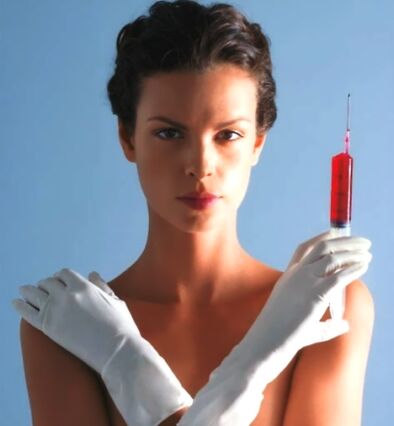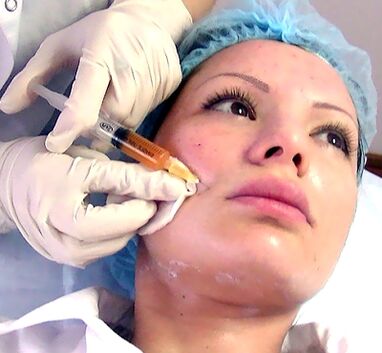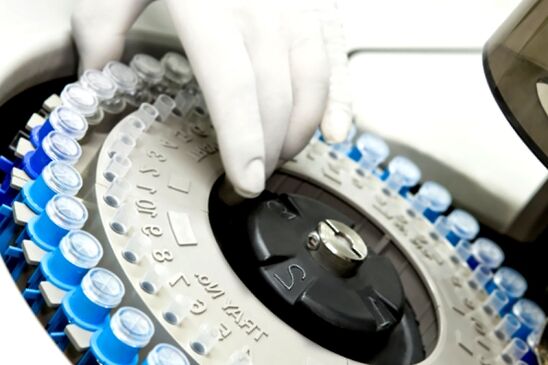Now fashionable was well-groomed, young, beautiful. But youth is a gradual contagious phenomenon and because we want to maintain it for as long as possible, cosmetologists give us this opportunity by developing, presenting and applying the latest, most effective techniques, rejuvenation procedures. But what choice should be made by a person from the whole wide range of modern cosmetic procedures who wants to prolong youth and beauty, rejuvenate the skin and improve the appearance? This article details the essence of one of the latest techniques - plasmolifting, talking about the safety and high efficiency of this technique.
What is plasmolifting

Human blood has a huge potential that can stimulate all the resources of the body, which is necessary for it to fight the aging process and age-related changes, rejuvenate the skin and restore general tissues. And the plasmolifting procedure facilitates highly effective disclosure, revealing all of this potential. What is plasmolifting, what is it based on, how is this cosmetology procedure performed, effective rejuvenation of the skin and subcutaneous tissues?
Plasmolifting is a cosmetological procedure, a non-surgical technique that rejuvenates the skin, activates the processes of tissue regeneration in the human body. This is the latest method that has revolutionized cosmetology. The basic principles and ideas of the technique, like everything genius, are very simple. This cosmetology procedure, its basic concepts are based on the ability of a human patient to restore platelets rich in platelets. The resulting plasma is injected into problem areas of the skin. Thanks to such injections, the human body receives a strong stimulus to activate natural rejuvenating and regenerative processes.
Such stimulating properties of platelet-rich plasma ensure the formation of skin cells from stem cells, the normalization of metabolic processes, the formation of hyaluronic acid molecules, stimulation of blood circulation and increase the production of elastin and collagen. Begins to rejuvenate the skin and deep subcutaneous tissues.
This cosmetology procedure has many other synonyms, for example, ACR - autologous cell rejuvenation, skin autorejuvenation, skin autoplasm therapy, skin plasma revitalization, plasma biorevitalization, hemorrhage rejuvenation, plasma biorevitalization, ".
The plasmolifting procedure is partly similar to biomassotherapy in that it uses the patient's biomass for injection, thus ensuring full compatibility of the biological components and eliminating the possibility of complications in the form of allergic reactions.
Plasmolifting is similar to the ReGen Lab cosmetology procedure developed by Swiss specialists, which also rejuvenates the skin and subcutaneous tissues. But it is a more expensive procedure and requires expensive equipment.
Plasmolifting visit history
Early precursors to this method are autohemotherapy (blood transfusion of a patient from a vein to stimulate the body's protective function in the buttock muscle), which has been used in medicine for over a hundred years, as well as in plasma. Therapy, a method of treating certain diseases by intravenous administration of blood plasma.
The first experiments aimed at rejuvenating human skin and immediately preceding the advent of the plasmolifting method were conducted in the United States decades ago. These studies led to a cosmetology procedure called PRP therapy (PRP-Plateled Rich Plasma). While the plasmolifting procedure is considered a modification of PRP therapy; It was patented by specialists in 2004.
Mechanism of influence
Platelets, in addition to their main function - to accelerate blood clotting, can secrete growth factor proteins that stimulate the process of cell division and growth. After an injury, platelets usually accumulate near the wound, which begins the process of stopping the blood flow as well as repairing the damaged area.
In order to force the cells to regenerate artificially, thereby producing skin rejuvenation, you must inflict minor damage, such as in a chemical peel procedure, or deceive the patient's body by delivering platelets to the desired location. Such an action would be a signal to start the regeneration processes.
Thus, platelet-rich plasma, when administered in the right places, promotes the regeneration of skin cells. Fibroblasts (connective tissue cells) begin to produce elastin, collagen and hyaluronic acid efficiently, as well as accelerate the formation of new skin cells and rejuvenate the skin.
Scope of plasmolifting
The plasmolifting procedure is mainly common in the field of cosmetology. Highly effective and fast, painless skin rejuvenation is its merit. But also this cosmetological procedure is successfully used in trichology, which is an effective means of combating baldness and hair loss. After a few sessions of plasmolifting, the hair structure is restored, their hair loss stops and the process of healthy hair growth begins. 2 to 10 plasmolifting procedures may be needed to treat hair loss and baldness, depending on the general condition of the hair.
The plasmolifting procedure is successfully used in dentistry to accelerate the process of implant placement and to treat periodontitis.
Indications for plasmolifting

The plasma filling procedure has the following instructions for its implementation:
- Peeling and dry skin;
- Preventing the appearance of stretch marks by drastic weight loss;
- Age over 25 years. Mimic and fine wrinkles - over 35 years old;
- Violation of the basic properties of the skin due to weight loss;
- Primary signs of skin prolapse, decrease in its density, elasticity;
- Accelerate skin tissue regeneration processes after laser and chemical peels;
- Acne and other dermatological diseases;
- Age-related elastosis, "gray" skin;
- Skin recovery after strong exposure to ultraviolet rays (sunbathing, solarium);
- Rare dull hair;
- Baldness and dandruff;
- Correction of bad effects of Botox injections.
Contraindications to plasmolifting
Plasmolifting procedure has the following contraindications to its implementation:
- Mental disorders;
- Sharp swelling of the skin;
- Blood diseases;
- Immune disorders;
- Chronic diseases;
- Exacerbation of various chronic diseases;
- Diabetes mellitus in severe forms;
- Diseases of various internal organs of the patient;
- Allergy to anticoagulants used in the manufacture of injections;
- Menstruation;
- Oncological diseases;
- Hypofibrinogenemia;
- Platelet abnormalities and dysfunctions, low platelet count (less than 1 μl per 100, 000);
- Low hemoglobin (level below 100 g per 1 liter);
- Fever, high temperature;
- Pregnancy;
- Use of antibiotics;
- Lactation period;
- Antiplatelet therapy;
- Use nonsteroidal anti-inflammatory drugs (NSAIDs) for two days before the procedure (eg, non-steroidal anti-inflammatory drugs), for example, aspirin, analgin;
- Inflammation of the skin at the injection site.
This cosmetology procedure has the following major limitations imposed on the patient before performing it:
- Ban on going to the solarium;
- Prohibition of natural tanning;
- Prohibition of swimming pools and saunas.
Plasmolifting Procedure: Conduct

It is recommended to perform several tests before the procedure: biochemical and clinical blood tests, blood tests for the presence of infectious diseases. Blood is then taken from the patient's vein into a test tube containing a separating gel and anticoagulant. The volume of blood taken depends mainly on the individual and biological characteristics of the patient. Usually it is about 10-20 ml. Then, using a special centrifuge, the blood is divided into three fractions:
- Cellular component (leukocytes and erythrocytes);
- Platelet-rich plasma (approximately 1 ml per 1 μl);
- Platelet-poor plasma (less than 150, 000 per 1 μl).
Platelet-enriched blood plasma is injected using microinjections into problem areas with a previously treated antiseptic solution. After its insertion, the fibroblasts are placed along the Langer line (an age-related natural stretch line). The skin is stretched in the process of stimulating the production of elastin and collagen. Microinjection techniques are generally similar to mesotherapy.
If necessary, anesthesia with a special cream can be used. At the end of the procedure, the areas on which the plasmolifting procedure was performed are once again treated with antiseptic. During the first 3 days after plasmolifting, patients usually experience redness and peeling of the skin, as well as its slight darkening. Small wrinkles may appear on the surface layer of the skin. It usually disappears after three days.
The duration of the procedure is usually 40 to 50 minutes. The basic course of plasmolifting is 4 sessions with a frequency of 1 session in one to two weeks. And to maintain the effect obtained, in order to consolidate, approximately 2 courses of repeated plasmolifting are required each year.
To avoid unpleasant side effects, the authors of plasmolifting are prohibited from further modification of the method, for example, with the addition of other components, vitamins, in platelet-rich plasma.
Plasma skin rejuvenation procedure has the most important advantage over other cosmetic procedures - the process of stimulating collagen production over time, ie improving the general condition of the skin, skin rejuvenation continues in the following months, up to a year. Inclusive.
Plasmolifting procedure: efficiency
In 40 percent of cases the effect is noticeable almost immediately after plasmolifting. In all other cases, this performed cosmetology procedure is not detected immediately, the results appear after about 2 weeks. To achieve a more pronounced, better effect, experts recommend several procedures. Then the skin rejuvenation of the treated area will be very noticeable. The result of the procedure can last up to two years.
The resulting effect can be compared to chemical peels for neck and facial skin: it becomes younger, more elastic, its color improves, fine wrinkles are smoothed. The most noticeable result after the procedure is the "porcelain skin" effect - the skin becomes very velvety, soft, smooth, as if glowing from the inside. Plasmolifting procedure is effective only when the first signs of age-related changes and skin aging appear. Rejuvenation. If there are deeper wrinkles on the face or an indistinct oval, then this cosmetic procedure will not bring good results.
Below is the average recommended duration of a plasma lifting course, as well as the results obtained for the following most common skin problems:
- Skin ptosis. Result: Increased turgor and skin tone. 4-6 Procedures 1 session in 7 days.
- wrinkles. Result: reduction in the depth and number of wrinkles, slowing down the rate of age-related changes. 4-6 procedures in 1 session every 7 days.
- Photoaging. Result: Elimination or reduction of hyperpigmentation, photoaging. 4-6 procedures in 1 session every 7 days.
- Tired skin. Result: reduction of circles under the eyes, swelling, as well as improvement of facial skin, local increase of skin immunity. 2-4 treatments, 1 session every 7 days.
- Problematic skin. Result: Reducing the appearance of acne, improving the condition of the skin, alleviating it. 4-6 procedures in 1 session every 7 days.
- dry skin. Nutrition and hydration, activation of metabolic processes. 2-4 treatments, 1 session every 7 days.
- Hair loss, baldness. Result: Inhibition of hair follicle growth processes, activation of hair growth. 4-6 procedures in 1 session every 7 days.
- Dry, thin hair. Result: Increase blood supply and nutrition to hair follicles, restore hair structure. 2-4 treatments 1 session every 7 days.
- Keratin, a problem of oily scalp. Normalize the function of the sebaceous glands, eliminate dandruff. 4-6 Procedures 1 session every 7 days.
Plasmolifting Procedure: Safety
Plasmolifting is an absolutely safe cosmetology procedure that provides almost painless rejuvenation of the skin without serious further complications. Platelet-rich plasma injections are not immunoreactive and non-toxic, since, as mentioned above, such plasma is obtained from the patient's blood without the addition of additional substances and drugs. Since the plasma rejuvenation procedure helps to activate the body's hidden resources, such skin rejuvenation does not cause adverse reactions. Minor complications are possible, such as spots on the skin, its redness, necrosis, hypopigmentation. Also, this cosmetic procedure does not have a recovery period. It should be noted that such complications are theoretically possible, but the chances of their occurrence are extremely small.
Combination with other procedures
The plasmolifting procedure combines perfectly with other anti-aging cosmetic procedures, such as all types of peels and laser surface restorations. Then skin rejuvenation will be revealed most effectively. Also, this cosmetology procedure is perfect for preparing the skin before plastic surgery and improving its condition during the postoperative recovery period. To achieve the maximum effectiveness of the plasmolifting method, it can be combined with other laser procedures:
- Hyaluronoplasty using a laser will prepare the skin to increase the hyaluronic acid content;
- Laser photothermolysis will allow you to combine the results obtained by plasmolifting;
- The combined laser will enhance the rejuvenating effect obtained.
Plasmolifting procedure: cost
The plasmolifting procedure is inexpensive in itself, since the patient himself is a supplier of platelet-rich plasma, the centrifuge performs the work of dividing the blood into fractions, and the injection of the obtained drug can be done by a cosmetologist trained by mesotherapy. Injections. The main component of the price of a plasmolifting procedure is intellectual property. But this cosmetic procedure is not so expensive.
The total value is formed taking into account the number and area of treated areas.





































































